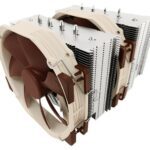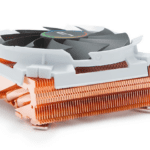Introduction to PSU Connectors (ATX12V 1.x – ATX12v 2)
The power supply unit (PSU) is a crucial component in any computer system, responsible for converting AC power from a wall outlet to various DC voltages that power computer components. Modern PSUs feature a variety of connectors that plug into various components like the motherboard, graphics cards, storage devices and more. Understanding what these connectors are and what they power can help ensure you choose a PSU with sufficient connectors and power delivery for your system.
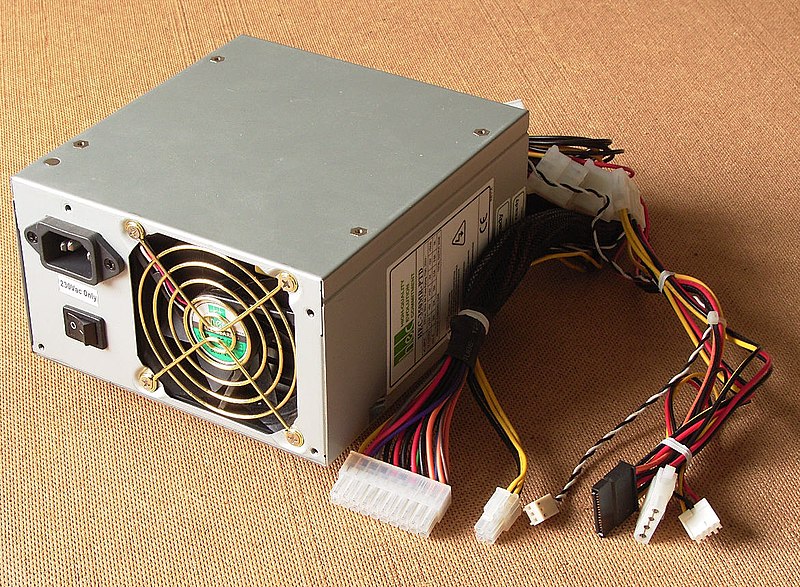
This photo depicts an older ATX 1.3 power supply from the early 2000s, featuring many now-obsolete design elements that illustrate how far standards have evolved. Prominently shown are the following legacy connectors:
20-Pin Motherboard – This precursor to the modern 24-pin ATX motherboard connector lacks the additional 12V/ground lines today’s boards require. 4-Pin “P4 Connector” – Designed to provide supplementary CPU power for the Pentium 4 era, this secondary connector sees little use now. Fan Monitor – Once used to track RPM speeds, fan headers now integrate this powerlessly. Molex Drive Connector – This venerable friction-fit plug powered older drives before SATA and Molex became outdated. Floppy Drive Connector – Providing power for now uncommon 3.5” floppy drives, this interface demonstrates its era.
Contents
ATX Power Connector
The main power connector on a PSU that plugs into the motherboard is the 20 or 24-pin ATX power connector. This provides the main 12V, 5V and 3.3V rails that deliver power for the CPU, RAM, chipset and other onboard devices. 20-pin connectors have been standard for many years, while higher-wattage PSUs now often use a 24-pin design that includes additional 12V and ground pins for improved power delivery. The connector features a notch on one side to ensure proper orientation.
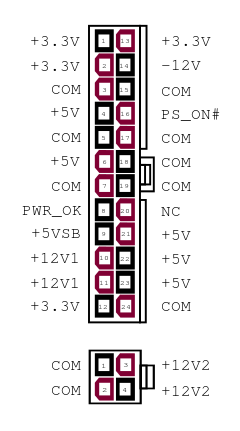
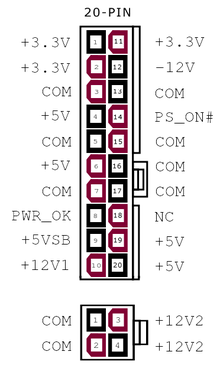
4/8-Pin CPU/EPS Power Connectors
Modern high-performance CPUs require additional power beyond what the 20/24-pin ATX connector can provide. For this, PSUs offer dedicated 4-pin or 8-pin CPU/EPS power connectors. The 4-pin option is common on budget PSUs and systems with lower power CPUs. But most mid-range and high-end PSUs now feature an 8-pin EPS connector or two 4-pin connectors that can combine into one 8-pin. The extra pins allow stable delivery of more amps to meet the demands of top CPUs.
PCIe Power Connectors
Dedicated power connectors for PCI Express expansion slots are also essential for graphics cards and other add-in cards. 6-pin and 8-pin PCIe connectors are the most common, with higher-end GPUs requiring multiple power connectors. The rectangular shape, notch on one side and missing pin location ensure proper installation and prevent damage. Modular PSUs allow users to only connect the PCIe power cables needed for their specific system.
SATA Power Connectors
SATA power connectors deliver the 5V and 12V needed to operate SATA storage devices like hard drives and SSDs. The distinctive L-shape fits into SATA device power ports in only the correct orientation. 15-pin connectors have long been standard, providing three 5V and 12V lines that can power up to three devices from one cable. But some newer power supplies now use 15-pin SATA connectors that support up to five storage devices instead.
Molex Peripheral Power Connectors
Molex connector is the colloquial name for the older standard 4-pin peripheral power connector used to power HDDs and optical drives before the introduction of SATA. While this style connector is increasingly obsolete, some power supplies still include limited peripheral/Molex connectors for backwards compatibility or to power auxiliary case fans. Each connector includes 5V, 12V and two shared ground pins to deliver power from the PSU to a compatible device.
Floppy Drive Power Connectors
A nearly extinct sight in modern systems is the dedicated floppy drive power connector. This 4-pin Berg connector featuring 5V and two 12V pins was mandatory in the past to power floppy disk drives. Now with both floppy drives and cases to install them nearly extinct, these legacy connectors have disappeared outside specific retro-focused PSU models catering to vintage build enthusiasts.
Choosing the Right PSU Connectors
When selecting a power supply unit, prospective buyers must ensure it includes all essential connectors to match their system setup. This includes at minimum a 20/24-pin ATX motherboard connector, a 4-pin or 8-pin EPS CPU power connector, and the quantity of 6/8-pin PCIe connectors required by your chosen graphics card(s). Any additional SATA or peripheral connectors can provide flexibility for storage and cooling fans. Those building vintage retro gaming rigs may also still require legacy connectors like floppy drive power. Examining your components and requirements before purchase is crucial to buy a fully compatible PSU.
Conclusion
The diverse set of connectors protruding from a PSU may seem imposing and esoteric at first glance. But each plays an important role in turning AC wall current into tailored DC power rails for essential computer components. Becoming familiar with PSU connector standards and what devices they interlink ensures both builders and upgraders choose power supplies fully compatible with their systems. As demands and standards continue evolving, PSU connectors transform in turn to supply modern components. But whether 20+4-pin ATX, 6-pin PCIe or tried-and-true SATA power, connectors remain the crucial conduits channeling stable power to all devices.

